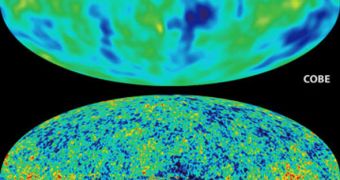A new and very powerful South Pole telescope is being tuned at the moment in a way that will allow it to detect hypothetic gravitational waves, distortions of space-time that have been only hinted at by mathematical calculations. It is the hope of astronomers that the new instrument will discover them, if they indeed exist. The concept is not new, and several governments have had various secret projects over the years, involving the discovery and harnessing of these waves, so far to little practical use.
If they are discovered following this effort, astronomers will finally have the ultimate proof that the big cosmology theory is indeed true. The potential discovery would also certify the cosmic inflation theory proposed by some scientists, which has it that upon its creation, the Universe expanded exponentially from a size smaller than that of an atom to one relatively comparable to that of a golf ball. There are many experts who agree with this theory, but no conclusive proof has thus far been obtained.
Cosmic microwave background, or CMB, is radiation that was left behind by the Big Bang. Astrophysicists believe that it exhibits fluctuations as far as density and temperature go, and that, if its existence can be proven, then identifying the gravitational waves would be just a step away.
“We'll know in 10 years whether or not we can detect gravitational waves from inflation,” John Carlstrom, an astrophysicist at the University of Chicago, explained last week at the annual meeting of the American Association for the Advancement of Science (AAAS) in Chicago.
The theory that the new South Pole Observatory will put to the test argues that the gravitational waves were “imprinted” on the CMB following the Big Bang, but that their intensity is simply too small to be detected by conventional means. That's why the researchers will not attempt to find normal waves, but those created by massive cosmic events, such as black holes colliding and merging with each other. Such occurrences might just have enough power to bring the gravitational waves out of their shadows.
“The amazing thing about inflation is that it is completely consistent with what we see. I think many people think that what's been called a smoking gun of inflation is gravitational waves. It's a prediction of inflation that is ubiquitous. It's a generic thing. If these waves are discovered (...) if we detect gravitational waves from inflation, there is a real possibility of pinning things down enough so that one could perhaps convince every physicist that inflation happened,” Lawrence Krauss, an astronomer at the Arizona State University, pointed out at the AAAS meeting.

 14 DAY TRIAL //
14 DAY TRIAL //